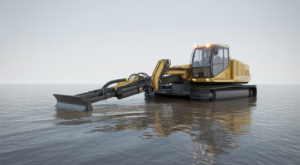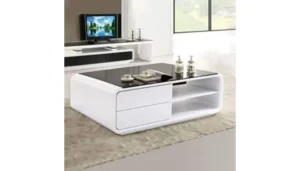How to Use Self Drilling Screws for Wood Projects?
Self-drilling screws simplify woodworking with sharp points that eliminate pre-drilling. Choose the right type and size for strong, aligned joints.

Self-drilling screws can really make your woodworking projects much easier. They have sharp points that create pilot holes as they are driven into the wood, so you won’t always need to pre-drill. There are different types to choose from, like reduced point screws for smaller holes or reamer tek screws which help when working with both wood and metal. When using them, it’s helpful to match the screw length and diameter with the material’s thickness to get a good grip. Remember to drill at lower speeds for wood and ensure alignment while installing to avoid breakage. Overall, proper usage makes strong joints simple!
1. Understanding Self-Drilling Screws
Self drilling screw in India stand out for their unique design, featuring a sharp point that allows them to penetrate materials without the hassle of pre-drilling. This innovation saves time and effort, making it a favorite for quick projects where speed is crucial. Their cutting threads create a precise hole as they are driven into the material, ensuring a secure fit while minimizing the risk of splitting, particularly in softer woods. This versatility means they can be effectively used in various applications, from woodworking to metal and plastic installation. With a range of sizes and thread patterns available, it’s essential to choose the right screw for your specific project needs. Understanding how these screws work can lead to better results, enhancing the durability and strength of your final product.
2. Types of Self-Drilling Screws
Self-drilling screws come in various types, each designed for specific tasks and materials. Reduced Point Screws are great for smaller projects, allowing for less invasive drilling, making them an ideal choice for delicate wood applications. For projects that involve both wood and metal, Reamer Tek Screws shine. They have wings that help ream out the wood before the screw engages with the metal, ensuring a solid connection. If you’re working with softer materials, Self-Tapping Screws can also be beneficial, as they tap their own threads, simplifying the process. For structural applications that require extra strength, Heavy-Duty Screws are available, offering robust support. If your project involves metal components, Sheet Metal Screws are specifically designed for that, but they can also work with wood if handled carefully. Wood Screws are tailored for wood, featuring deeper threads that grip better and reduce the likelihood of pulling out. In some cases, Concrete Screws might be applicable, especially in projects that integrate concrete elements, providing secure fastening. For unique situations, Specialty Screws come with specific coatings or features to address environmental concerns or unique material combinations. Collated Screws, designed for use with pneumatic tools, allow for faster assembly, which can be a real time-saver on larger projects. Lastly, Multi-Material Screws are engineered to handle different materials seamlessly, making them versatile for complex designs.
3. Applications of Self-Drilling Screws
Self-drilling screws are a go-to choice for numerous wood projects, thanks to their versatility and efficiency. They are particularly popular in deck construction, where their ability to penetrate tough materials quickly can save time and ensure a solid structure. In furniture assembly, these screws offer both strength and speed, allowing for faster build times while maintaining robust connections.
When it comes to cabinetry, self-drilling screws create strong joints capable of supporting significant weight, making them ideal for kitchen and storage solutions. Roofing applications also benefit from these screws, especially when attaching metal sheets or shingles, providing durability and weather resistance.
For those working on wooden frames for structures, self-drilling screws ensure sturdy connections that can withstand various loads. In automotive and appliance assembly, precision is paramount, and these screws deliver reliable performance. Outdoor furniture projects often require weather-resistant solutions, making self-drilling screws a suitable choice.
DIY enthusiasts find self-drilling screws particularly helpful, as they simplify the assembly process for novice woodworkers, allowing for quick and straightforward project completions. Additionally, in the construction of modular homes, these screws facilitate fast assembly, proving invaluable in time-sensitive situations. Finally, they are commonly used in installing shelving units, providing the stability and support necessary for effective organization.
4. Installation Techniques for Self-Drilling Screws
Using self-drilling screws effectively requires some attention to technique. Start with pre-drilling in delicate or hard woods to enhance precision and minimize the risk of splitting. Even though these screws are designed to create their own holes, a pilot hole can be beneficial. For best alignment, always ensure that the screw is driven along the wood grain. Maintaining a steady hand is crucial; this helps keep screws straight and prevents misalignment, which can lead to weak joints.
Adjusting the torque setting on your drill is another key aspect. Too high a torque can cause screws to break, especially in softer woods. A lower torque is advisable for these materials, while a higher setting may be necessary for tougher woods or when drilling through metal.
Keep in mind that the speed of your drill can influence the installation process. A slower speed is usually better for wood to prevent splitting, while a faster speed is needed for metal. Using a clamp can stabilize your workpiece, allowing you to focus on driving the screws accurately.
Before inserting a screw, make sure to clear any debris from the hole to prevent binding. Utilizing a depth stop can also be beneficial, helping to avoid driving the screw too deep into the material. Finally, ensure that the drill bit matches the screw size to maintain a consistent fit and finish.
- Pre-Drilling can enhance precision, especially in delicate woods, reducing the likelihood of splitting.
- Using the right torque setting on your drill is crucial; too high can break the screw.
- A steady hand is essential to keep screws straight during installation, preventing misalignment.
- Pilot Holes can be drilled when working with very hard woods to avoid damage.
- For best results, ensure the screw is aligned with the grain of the wood.
- Utilizing a clamp can stabilize the workpiece, allowing for better focus on the screw installation.
- Adjusting the speed of the drill can help in controlling the insertion of the screw, especially in varying densities of wood.
- Using a depth stop can prevent the screw from being driven too deep into the material.
- Always clear debris from the hole before inserting the screw to avoid binding.
- Ensure the drill bit matches the screw size to maintain a consistent fit and finish.
5. Choosing the Right Screw for Wood Projects
When selecting self-drilling screws for your wood projects, the right choice is crucial for achieving strong, reliable joints. Start with the thickness of the wood; screws should match this thickness to ensure a secure grip. Generally, the screw length should penetrate at least 1.5 times the thickness of the material being joined, which helps provide the necessary strength.
Next, consider the diameter of the screw. For heavier applications, thicker screws are essential to bear the load without failure. The thread pattern also matters; finer threads are ideal for softwoods, while coarser threads work best in hardwoods, allowing for better engagement without splitting the material.
The head type of the screw can affect both the look and the ease of installation. Options like flat, round, or hex heads should be chosen based on the desired finish and the tools you have on hand. If your project will be outdoors, it’s wise to select corrosion-resistant screws to extend the life of your work.
Color coding can be a helpful feature, making it easier to identify screws for specific uses during your project. Additionally, screws with a star drive can provide better torque and grip, simplifying installation. Always check the manufacturer’s specifications to ensure compatibility with your materials, and consider the environmental conditions where your project will be located to choose the most durable coating.
6. Common Features of Self-Drilling Screws
Self-drilling screws come with several features that enhance their performance and usability in wood projects. First, drill flutes play a crucial role; they help remove shavings during installation, preventing overheating and ensuring smoother operation. Another important feature is point wings, which widen the entry point into the material, allowing for a smoother screw insertion and reducing the likelihood of binding. The grip length of the screw is also significant; longer threads provide better engagement with the wood, resulting in enhanced stability and strength of the joint.
Different head styles can impact both the appearance and effectiveness of the screw. For example, a pan head might offer a more finished look, while a flat head sits flush against the surface, which can be desirable in certain projects. Additionally, screws that come with a built-in washer can create a better seal against moisture, making them ideal for outdoor applications where exposure to the elements is a concern.
Some self-drilling screws incorporate a self-limiting feature that prevents overdriving, which can cause damage to the material being fastened. A sharp point on the screw facilitates easier entry, requiring less pressure during installation. Certain designs also include a split point, which enhances accuracy and reduces friction when driving the screw into the material.
Lastly, the material composition of the screws is vital for their durability. Choosing the right alloy can significantly improve performance in various environmental conditions. Different coating types are available, each offering a level of corrosion resistance that can be crucial depending on the project’s location and intended use.
7. Coating and Material Options
When selecting self-drilling screws for your wood projects, the choice of coating and material is essential for ensuring durability and performance. Stainless steel screws are excellent for outdoor applications due to their high corrosion resistance, making them ideal for decks and outdoor furniture. For indoor use, zinc-coated screws offer a basic level of rust protection, while galvanized screws are treated to withstand moisture, perfect for areas prone to humidity.
If aesthetics are a priority, consider black oxide screws, which provide a sleek finish and mild corrosion resistance suitable for indoor furniture. For more demanding environments, epoxy-coated screws deliver exceptional protection against wear and chemicals. Painted screws can also be used to match specific project colors while adding a layer of protection.
Additionally, copper screws are an interesting choice due to their antimicrobial properties and unique appearance. Always keep in mind that the material can affect both the strength and weight of the screw, so choose wisely based on your project needs. Understanding the environment where the screws will be used is crucial in making the right coating choice. Lastly, always check the manufacturer’s specifications to ensure the screws meet your project requirements.
8. Best Practices for Using Self-Drilling Screws
When working with self-drilling screws, proper alignment is crucial. Misalignment can cause damage to the material, leading to split wood or stripped screw heads. Instead of forcing the screw, let the drill do the work. Excessive pressure can strip the screw head or even break the screw itself, especially in softer woods.
For projects involving thicker materials, opt for longer screws. This ensures better engagement and helps maintain the integrity of the wood. Always check the drill’s power and torque settings to match the material you’re working with. It’s a good idea to test a few screws in scrap pieces of wood first. This will help you ensure the screw size and type are suited for your project.
If a flush finish is needed for the screw head, consider using a countersink bit. Keeping your work area clean is also important; debris can interfere with drilling and lead to mistakes. Store your screws properly in a dry place to prevent rust and damage.
In dense materials, using pilot holes can enhance precision and help avoid splitting. Finally, don’t forget to wear safety goggles when using power tools to protect your eyes from any debris.
Frequently Asked Questions
1. What are self drilling screws, and how do they work with wood?
Self drilling screws are special screws with a tip designed to create their own hole as they are driven in. When you use them with wood, the tip bores into the material, making installation quicker and easier without needing to pre-drill a hole.
2. Can I use self drilling screws for different types of wood?
Yes, self drilling screws can be used on various types of wood, including softwood and hardwood. Just make sure to choose the right size and length to match the wood type and your project needs.
3. What tools do I need to drive self drilling screws into wood?
To drive self drilling screws into wood, you’ll need a power drill or a screwdriver. A drill is often preferred since it offers more power and speed, making the job easier.
4. Are there any tips for using self drilling screws effectively in wood projects?
Absolutely! Make sure to choose the right size screw, start with a pilot hole if you’re working with hardwood, and maintain steady pressure while driving the screw in to ensure a tight fit.
5. What should I do if the screw doesn’t drive into the wood properly?
If the screw isn’t going in smoothly, check if you’re using the right size and type. You might need to adjust the drill speed or try a pilot hole for harder woods. Ensure the screw isn’t damaged, as that could also cause problems.
TL;DR Self-drilling screws are designed for quick installation in wood projects, creating their own pilot holes for efficient fastening. Familiarize yourself with the types, such as reduced point and reamer tek screws, and consider their applications in building furniture and cabinetry. Proper installation techniques include optional pre-drilling and maintaining the right drilling speed. Choose the right screw length and diameter for the material, while paying attention to thread count and spacing. Features like drill flutes and coatings enhance performance. Follow best practices for alignment and pressure during installation to ensure strong joints.







